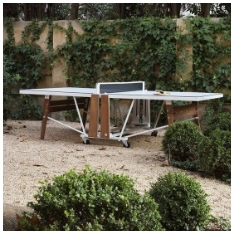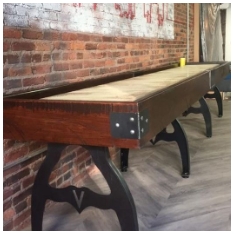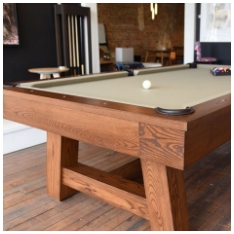When it comes to optimizing your pool table for smooth and consistent play, one of the most crucial components is the table felt. The type and quality of felt used can significantly influence gameplay, from ball control to speed and accuracy. In this guide, we provide an in-depth look at the best felt for summary play on pool tables, including key features to consider, maintenance tips, and product options that support better performance.
Understanding the Role of Felt in Pool Table Performance
Pool table felt, also referred to as cloth, covers the slate bed and cushions of the table. It affects how balls move, bounce, and spin. For summary play, which involves both casual and occasional competitive use, choosing the right felt ensures consistency and reduces the need for frequent replacements.
Felt vs. Cloth: What's the Difference?
The terms "felt" and "cloth" are often used interchangeably, but technically, most high-quality pool table surfaces are made of a wool-nylon blend, known as worsted cloth. This is not the same as true felt, which is more fibrous and typically used on lower-end or novelty tables.
Worsted cloth offers a tighter weave, which allows for faster and more precise ball movement—ideal for both beginners and experienced players engaging in summary play.

Key Factors When Choosing Pool Table Felt
Selecting the best felt for summary play on pool tables involves evaluating several criteria. These factors can determine how long the felt lasts, how easy it is to maintain, and how well it performs under regular play conditions.
1. Material Composition
The most common materials used in pool table felt are:
- Wool-Nylon Blends: Typically around 70–80% wool and 20–30% nylon. This combination offers durability and smooth play.
- Worsted Wool: Known for its precision, this type of cloth is used in tournament-grade tables.
- Non-Worsted Wool: Often more affordable, but tends to wear out faster and provides less consistent play.
For summary play, a wool-nylon blend or worsted wool felt is generally recommended.
2. Speed and Smoothness
Speed refers to how fast the balls move across the surface. Worsted cloth provides a smoother surface, reducing friction and increasing speed. This can be particularly useful for players who want to develop consistent shot strength and cue ball control.
3. Durability
Durability depends on how often the table is used and how well the felt resists pilling, tearing, and stretching. High-quality felt can last several years with proper care, even under regular play conditions.
4. Thickness and Weight
Felt thickness and weight impact how the cloth fits over the slate and cushions. A medium to heavy weight cloth generally provides better durability and minimizes bunching or sagging over time.
5. Color Options
While color doesn’t impact performance, it can affect visibility. Traditional green is widely used, but colors like blue and burgundy are also common for improving ball contrast under different lighting conditions.
Popular Types of Pool Table Felt for Summary Play
Here are some of the top felt options preferred for summary or recreational play, based on performance, cost, and availability:
Simonis 860
- Material: 90% worsted wool, 10% nylon
- Usage: Suitable for both tournament and recreational play
- Benefits: High-speed, consistent play with strong wear resistance
Simonis is widely recognized for producing durable and high-performance cloth. The 860 model is particularly suited for summary play due to its balance between speed and control.
Championship Invitational with Teflon
- Material: 75% wool, 25% nylon, Teflon-coated
- Usage: Recreational and home use
- Benefits: Built-in stain resistance and easy maintenance
This cloth is designed for environments where spills and dust might be more common. The Teflon coating offers protection without reducing play quality.
Felt by ProForm
- Material: 70% wool, 30% nylon
- Usage: Home and club tables
- Benefits: Medium-fast play, fade-resistant, consistent roll
ProForm cloths offer a cost-effective solution while still providing solid playability. It's a good option for summary use in less formal settings.
Installation Considerations
Proper installation of felt is key to getting the best results. Whether done professionally or through a DIY method, the felt must be stretched evenly and tightly across the slate and cushion rails. Uneven installation can lead to:
- Wrinkles or bunching
- Inconsistent ball roll
- Increased wear in high-use areas
For those unfamiliar with the process, hiring a technician is often the best approach to ensure a clean and accurate fit.
Maintenance Tips to Extend Felt Lifespan
Regular maintenance helps preserve felt performance and delays the need for replacement. Here are key care tips for your pool table:
Brush the Table Regularly
Use a soft-bristle pool table brush to remove chalk dust, lint, and debris. Brush in straight lines from the center out toward the pockets to prevent buildup.
Use a Table Cover
A pool table cover helps protect the felt from dust, sunlight, and accidental spills when not in use. Exposure to light can cause some felt types to fade over time.
Avoid Sharp Objects and Food
To reduce the risk of tears and stains, avoid placing drinks, food, or sharp items on or near the table. Encourage players not to sit on the table edges.
Refrain from Excessive Chalk Use
Excess chalk buildup can wear down the felt surface. Using moderate amounts and cleaning the table regularly keeps it in better condition.
When to Replace Pool Table Felt
Even the best felt will eventually need to be replaced. Signs it’s time include:
- Visible wear or tears
- Inconsistent ball roll or bounce
- Excessive fading or thinning areas
- Felt no longer lying flat or developing slack
For summary play tables, felt typically lasts 3–5 years depending on usage and care.
Cost of Quality Felt for Summary Play
Prices vary depending on material quality and size. On average:
- Entry-Level Felt: $100–$150 (may not offer consistent play)
- Mid-Range Felt: $150–$250 (ideal for home use and summary play)
- High-End Felt: $250–$400 (best performance and longevity)
Installation costs are separate and may range from $150–$300 depending on service provider and location.
Conclusion
Choosing the best felt for summary play on pool tables is about more than just appearance. Material quality, installation, and maintenance all influence how well your table performs and how long the felt lasts. Whether you're a casual player or use your table regularly with friends and family, investing in quality felt enhances your playing experience while minimizing long-term upkeep.
For summary play, felts like Simonis 860, Championship Invitational with Teflon, and ProForm offer a good balance of durability, playability, and cost-efficiency. Paired with proper care and routine maintenance, the right felt can make a significant difference in the performance and lifespan of your pool table.





